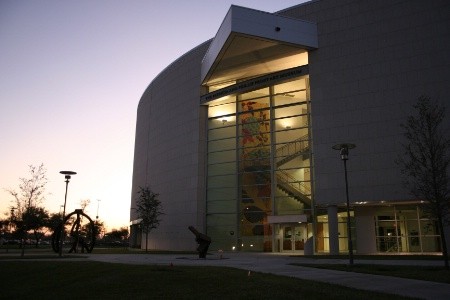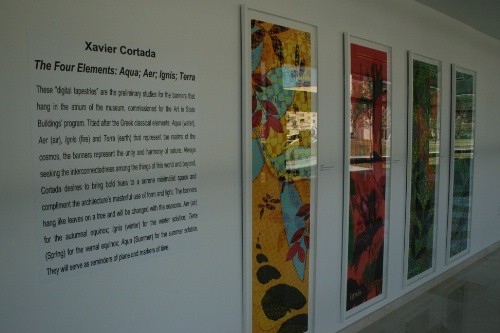The four pieces I created for my public art commission at the Frost Art Museum are “digital tapestries” titled after the Greek classical elements: Aer, Ignis, Aqua, and Terra. In Greek philosophy, science, and medicine these four elements represent “the realms of the cosmos where in all things exist and where of all things consist.” Today, we know that water, air, fire and earth are actually comprised of the molecules made from elements found in the Periodic Table. But science continues to push the boundaries of our understanding: The Periodic Table I memorized in college does not contain some of the elements FIU Chemistry students are learning about today. And science keeps advancing: During my residency in the South Pole last January, I met a Swedish astrophysicist who was studying the elusive and little understood neutrinos. He was trying to help me understand how by measuring how these subatomic particles shoot through the Antarctic ice sheet we could better understand the creation of the universe. Like the Greeks and my astrophysicist friend, as an artist, I seek to find the interconnectedness among things to gain greater understanding. This interdisciplinary approach is the thing of universities. The banners at the Frost will invite students and faculty from all fields to experience culture and explore beyond what they are taught to learn in their respective disciplines. In bright colors (e.g., ignis is red, aqua is blue) these banners suggest that if we look more closely at our surroundings, there are new worlds to discover. Indeed, inside the museum, there are works by artists who strive to push boundaries to further human understanding.For me, breaking things down to their basic components, their essential elements, and then seeing how they interact presents an interesting opportunity to explore our natural world and local ecosystems. Exploring the four elements also presents an interesting opportunity to use four bright colors (red, yellow, blue, green) in creating four seasonal banners (in a place with only two seasons: wet and dry). Native Trees: The images of leaves on the banners belong to native trees that at one time grew at the very location of the Frost. Indeed, the banners do more than invite those outside in to experience the art. They also bring nature into the building that sits on the edge of a natural lagoon.Climbing up the cantilevered staircase is like climbing the branch of a tree where one is surrounded by “leaves.” The experience is intense and personal: if one were looking at the details of the leaves made of chlorophyll instead of ink, one would witness the boundless beauty and interplay of nature at work on every branch on that tree. The vantage point gives one a different perspective; from that height one (can see out the window) and imagine the tree canopy and ecosystem that was once there. The experience can serve as an invitation to find a more balanced approach to coexisting with nature.
Xavier Cortada

